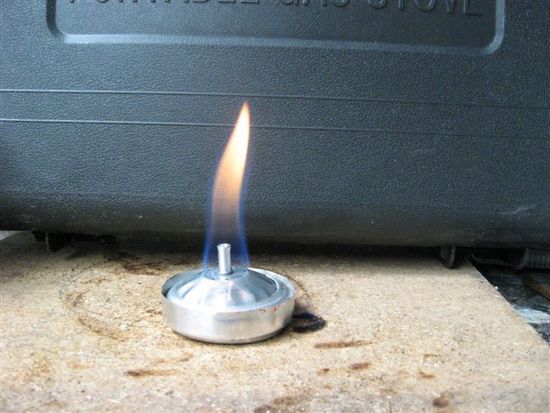Orion wrote:I'm curious, all the "tinkering and testing", is it more or less a trial and error method to figure out what works? Or do you have a sense for why some designs are better than others?
I started getting interested in alcohol stoves in the summer of 2007. At that time, I didn't have the foggiest clue of what might constitute a good design vs. a poor one. I read a lot on BPL. I purchased some stoves and made others. Things really accelerated in 2010 when I found out just how inefficient the stove I was using was compared to the stove of a good friend of mine. I actually ran out of alcohol on one particular trip and couldn't finish my cooking. I got really disgusted and decided to find out about alcohol stoves. Now, I have a pretty good, intuitive idea of what will make for a good stove. Plus I can bounce things off of people on forums such as this.
Orion wrote:For example, why would the pin mass on Tony's stove matter?
Tony will have more to say about this I'm sure, but my read on the matter is that it's probably more than just the mass. I would think that it has to do with thermal conductivity, surface area, and mass. Again, I will defer to Tony who has greater scientific background and has done actual testing, but, just based on what I've seen of the stove, I'll make some general remarks.

Since the central pin in Tony's volcano stove is in direct contact with the body of the stove, heat will naturally be conducted into the stove body. The mass of the body will absorb some of the heat, and then transfer that heat into the fuel which in turn will cause increased vaporization in the fuel which will affect the overall rate of combustion. If the central pin were stainless steel (a relatively poor heat conductor), I would expect less thermal conduction. If the central pin were copper (a relatively good heat conductor), I would expect more thermal conduction. Greater mass in the pin would generally transfer a greater amount of heat although there may be a limit over a certain amount of thickness. If the pin's mass were arranged in such a way to maximize surface area, I would expect greater heat transfer. Those are just some general remarks. I'm sure Tony can give us some very specific empirically derived data.
Orion wrote:Also, ignoring weight, is the Trangia considered a really good burner or just an okay one?
In my opinion, the Trangia is a very good burner overall. I think it's a nice balance between speed and efficiency. It's robust. The simmer ring gives one the ability to a) simmer and b) easily extinguish the stove. The cap with it's "O" ring seal allows one to leave unburnt fuel in the stove for later use. Other than perhaps the weight, I have nothing but good things to say about the Trangia burner.
Now, of course, when temperatures get below somewhere around 5C, alcohol stoves can suffer a bit. And for snow melting, an alcohol stove would not be my first choice. But when the temperatures are at least two digits, I think alcohol stoves, albeit slow, are a very good choice, depending on your particular needs.
HJ

